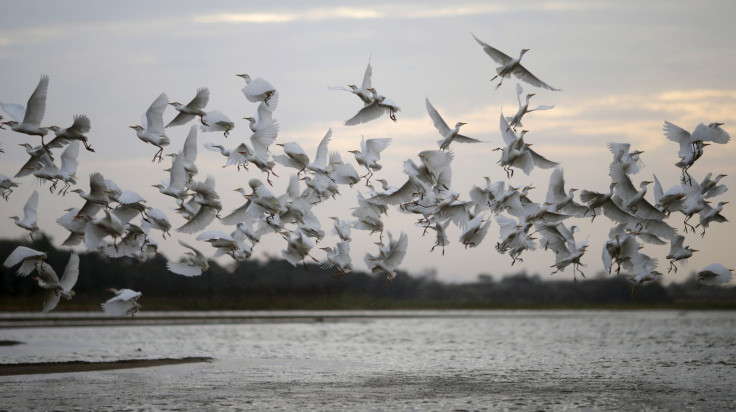Toxic Mud From Brazil Mine Collapse Reaches Atlantic Ocean, Threatening Dolphins, Turtles And Whales

Toxic mud traveling down Brazil’s Rio Doce river has made its way to the Atlantic Ocean, and biologists say the chemicals could disrupt the delicate marine habitat that is a breeding ground for a variety of species, including the threatened leatherback turtle, dolphins and whales. The sludge contains dangerous levels of mercury, arsenic, chromium and manganese.
The chemical mix was released into the river two weeks ago when a mining dam about 310 miles upriver collapsed, the BBC reported. The mouth of the river was dredged by workers in the aftermath so the mud could move into the ocean quickly and dissipate.
Environmental experts noted that since there hasn’t been an environmental disaster of this magnitude, it is difficult to predict exactly how severe the impact could be on local wildlife and the environment. It is estimated somewhere around 25,000 times the volume of an Olympic swimming pool’s worth of the mud was released after the dam collapse. Originally two mines were reported to have been affected; however, that report was later revised -- though other dams are in danger of collapsing.
The collapse has been blamed on the mining company Samarco, a venture currently operated by an Australian and Brazilian company.
The dam collapse has also resulted in workers for the company voicing safety concerns. The initial collapse resulted in at least 11 deaths, with a further 12 people missing. Mining workers and residents of the area have told reporters they fear for their lives and about their dangerous working conditions. The company running the operations has laid off hundreds of workers recently, and their ability to maintain safe working standards has been stretched thin in the process. Samarco and its affiliates have said they are reviewing hundreds of dams under its purview, and no immediate threats have been identified.
© Copyright IBTimes 2025. All rights reserved.






















